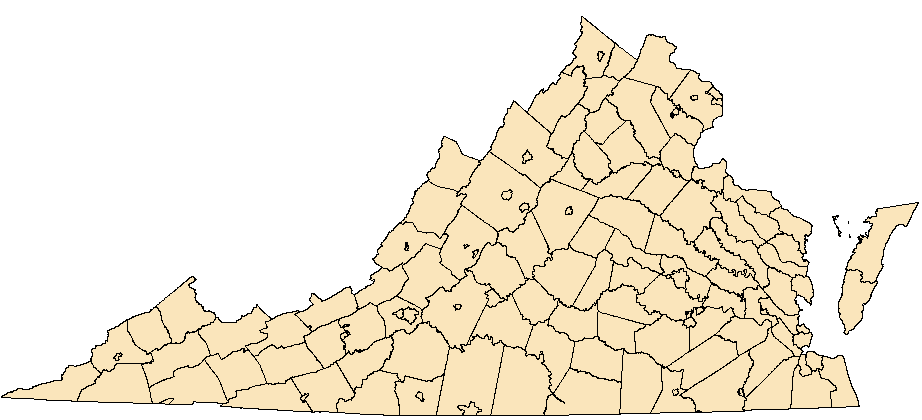Tachopteryx thoreyi (Hagen in Selys, 1858)
Gray Petaltail
NatureServe Global Rank: G4
Virginia State Rank: S4
VA DGIF Tier: IV
Federal Legal Status: None
Virginia Legal Status: None
Description: The Grey Petaltail is very large at 3.0 inches long. It has a gray-brown face with gray-highlighted brown eyes, dulling to gray when mature. The thorax is purplish-gray with a black humeral stripe and one black stripe on each side. The abdomen is the same color and has broad, dark bands that become darker black towards the posterior end.
Similar species: The Grey Petaltail is easily distinguished from the other dragonflies in the east. No other species has the size and coloration of this species, leaving nothing to confuse it with.
North American Range: It can be found from New York to Missouri, south to eastern Texas and northern Florida. It is apparently absent from the coastal plain of North and South Carolina.
VA Observations by Locality: James City | Williamsburg, City of | Fairfax | Page | Rockbridge | Smyth | Augusta | Bedford | Brunswick | Caroline | Dickenson | Essex | Fairfax | Fauquier | Floyd | Franklin | Frederick | Giles | Grayson | Hanover | Henry | Lee | Lunenburg | New Kent | Patrick | Prince William | Russell | Scott | Shenandoah | Wythe































Flight season and broods: The Grey Petaltail can be found in Virginia from May through August.
Aquatic Habitat: It prefers shallow, muddy stream and seeps, usually in forested areas.
Behavior and Ecology: The Grey Petaltail perches on flat surfaces at any angle, including logs rocks and tree trunks. It is also attracted to lighter-colored surfaces and is easily approachable, even landing on people that enter its habitat. They ambush other flying insects from tree trunk perches, often larger insects, including other dragonflies. It also flies in a figure-eight pattern while hunting smaller prey. The males are not territorial and seek females by flying up tree trunks. Copulation occurs high in the trees, and females oviposit in small puddles or mud. Nymphs can be found in wet leaves and mud.
Population trend and potential threats: Habitat destruction is a threat to this species.
Management practices: Populations should be monitored and habitats preserved.
References: Bangma, J. 2003. The Dragonflies and Damselflies of New Jersey. http://njodes.com/Speciesaccts/species.asp . Accessed: 4/8/2013
Dunkle, Sydney W. 2000. Dragonflies Through Binoculars: A Field Guide to Dragonflies of North America. Oxford University Press, New York, NY. 266 pp.
LeGrand, H., E. Corey and T. Howard. The Dragonflies and Damselflies of North Carolina. http://www.dpr.ncparks.gov/odes/a/accounts.php. Accessed: 4/8/2013
Paulson, Dennis. 2011. Dragonflies and Damselflies of the East. Princeton University Press, Princeton, NJ. 530 pp.
West Virginia Division of Natural Resources: Wildlife Diversity Program. Dragonflies and Damselflies of West Virginia. http://martes.dnr.state.wv.us/Odonata/default.aspx Accessed: 4/8/2013
Virginia Department of Conservation and Recreation, Natural Heritage Program, 600 E. Main St., 24th Floor, Richmond, VA 23219
This atlas was compiled
by the VA Natural Heritage Program with funds provided by the VA Dept. of Game and Inland Fisheries through a state wildlife grant
from U.S. Fish and Wildlife Service
Questions/Comments? Check the contacts page |
Internet Privacy Policy Statement
Last Modified: Friday, 26 February 2021, 03:21:56 PM